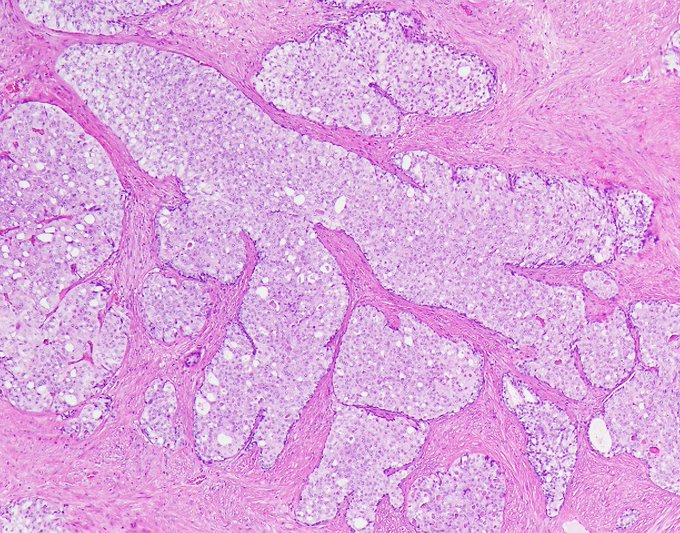
Tamara Lotan, MD
@LotanLab
Followers
384
Following
161
Media
0
Statuses
34
Molecular pathologist with focus on prostate cancer. Johns Hopkins University.
Joined May 2019
Don't wanna be here?
Send us removal request.
Explore trending content on Musk Viewer
DeNiro
• 166621 Tweets
Begoña Gómez
• 152850 Tweets
Meyer Habib
• 148954 Tweets
Sura
• 102474 Tweets
Hollywood
• 99662 Tweets
Blanche
• 88887 Tweets
Guiraud
• 77449 Tweets
Angela Rayner
• 65946 Tweets
Washed
• 59898 Tweets
Meloni
• 58260 Tweets
Julie
• 54225 Tweets
Diane Abbott
• 51381 Tweets
Abascal
• 44805 Tweets
$BOOST
• 42908 Tweets
#خادم_الحرمين_الشريفين
• 41926 Tweets
Riot
• 31124 Tweets
Dick Schoof
• 29307 Tweets
Faker
• 28154 Tweets
Barquisimeto
• 27659 Tweets
Ahri
• 27030 Tweets
LOBA COM IFOOD
• 26272 Tweets
De Luca
• 24111 Tweets
F-35
• 22044 Tweets
#KohLanta
• 18416 Tweets
Juvinao
• 17053 Tweets
HMRC
• 13784 Tweets
Fajna
• 12648 Tweets
Boulos
• 11009 Tweets
Last Seen Profiles
Beautiful
#tweetorial
on intraductal and cribriform PCa from
@rovingatuscap
. While both seem to be associated with aggressive PCa, it is important to note that these can be difficult or impossible to distinguish without immunostains and this has been a confounder.
#ProstateJC
Spectrum of Intraductal Carcinoma of the Prostate (IDC-P) is broader:
Most common definition:
Expanded intraductal proliferation w/either:
➡️dense cribriform/solid architecture
➡️loose cribriform/micropapillary architecture +marked atypia +/- necrosis
#prostateJC
#gupath
2
13
35
1
5
20
@Chucktowndoc
@rovingatuscap
@IHC_guy
@daniel_berney
@Williamson_SR
@fabiotavora
@PathDocBoston
Lost in about 80% of NEPC cases in our experience. We have definitely seen NEPC cases with retained expression even when PSA is negative. Usually AR still positive in these cases as well.
1
0
9
In this study with
@Ecastromarcos
we used IHC for basal cells to distinguish IDC-P and invasive cribriform carcinoma. Interestingly, both were associated with bi-allelic BRCA2 mutations.
#ProstateJC
1
1
7
@rovingatuscap
@lalpritu
We’ve found it is possible to standardize staining and reporting with the CST D4.3 clone, the BenchMark and a simple dichotomous scoring system. BUT there are rare cases of HGPIN with loss and the natural history of these lesions is uncertain, so it is difficult to be definitive
1
4
6
@fabiotavora
Great question. Homozygous PTEN deletion was significantly more common in cases with gBRCA2 mutations than controls (42% vs 27%). Though we don’t know whether the second hit to BRCA2 occurs before or after PTEN loss.
#prostatejc
0
3
4
@GladellPaner
@drmehrarohit
We have a new mouse model of SFPQ-TFE3 carcinoma with very similar bi-phasic pattern—would be interested to know fusion partner in this case!
0
0
3
@brady_urology
@allaf_mo
@HopkinsMedicine
Congratulations, Mo! So excited to see what the next era of Brady Urology will bring!
1
0
3
@OSU_Urology
@Sood11
@ctleeuro
@OSUWexMed
@OSUCCC_James
Congrats, Akshay! So proud of all you have accomplished!!
1
0
2
@FKhaniPath
@uroegg
Agree. No PTEN loss in isolated HGPIN, nor is it an invasive lesion as is GG1 PCa.
1
0
2
@rajalbshah
@rovingatuscap
@JHUPath
@Aiims1742
@soulehoward1
@AGMSKCC
Thanks all! It’s long overdue!
0
0
2
@daninava
Yes! They seem to be associated with high rate of underlying pathogenic mutations in DNA repair genes (HR and MMR) though the rates differ a bit by center, likely due to differences in how pathologists identify ductal CA.
0
0
1























